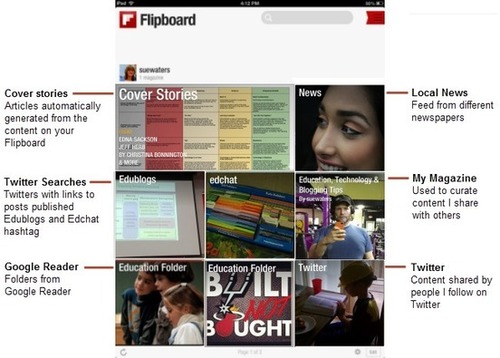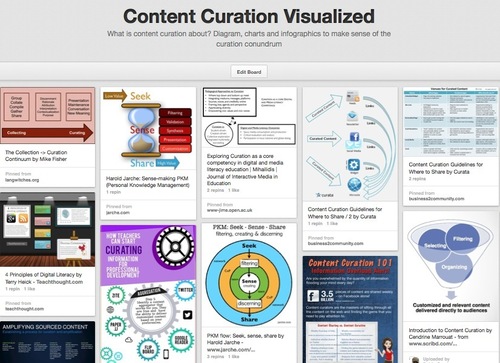 I asked the same question myself when I first stumbled across this phenomenon, but having ‘been there, done it and got the certificate’, I feel slightly more qualified to answer the question. MOOC is an acronym for “Massive Open Online Course”. I’ve just completed a Coursera MOOC on Social Network Analysis, run by the University of Michigan. The course lasted 8 weeks, with a timed 2-hour exam in week 9.
I asked the same question myself when I first stumbled across this phenomenon, but having ‘been there, done it and got the certificate’, I feel slightly more qualified to answer the question. MOOC is an acronym for “Massive Open Online Course”. I’ve just completed a Coursera MOOC on Social Network Analysis, run by the University of Michigan. The course lasted 8 weeks, with a timed 2-hour exam in week 9.
Coursera was established by computer science professors Andrew Ng and Daphne Koller from Stamford University and is one of a growing number of organisations offering free online courses. Courses include Humanities, Medicine, Biology, Social Sciences, Mathematics, Business, Computer Science, and others. Each course includes short video lectures on different topics and assignments to be submitted, usually on a weekly basis. Assignments were scored automatically for the Social Network Analysis course, with results available within minutes of submission. Some courses and assignments use a peer review system where an objective standard is difficult to establish. This was the case for the optional programming element of the SNA course.
I opted for something called the “Signature Track”, which meant that all my assignments and exam submissions were electronically verified against my personal ID, which was established by one-off submission of an official photo ID document, such as a driving licence or passport. The only technical requirement (other than a PC/laptop and Internet connection) was a webcam for taking a photo image of my face, submitted for each assignment, which would be compared to the image they had on record. All of this security and fraud detection was supplemented by a clever algorithm that profiles keyboard typing patterns, e.g. to deter me from substituting someone else to submit assignments.
It’s not compulsory or necessary to run this gamut of security procedures if all you want to do is take the course and are not worry about having a formal certificate of achievement at the end. I did, but that’s purely a personal decision. I got my certificate for a pass score of 88.5%, where 80% was the pass/fail threshold.
Given this was my first experience of a MOOC, I did a bit of background research to get a better understanding of how this compared to traditional pedagogical learning methods. I was slightly surprised to learn that, on average, less than 10 percent of students complete a course. This is according to research conducted by the Open University.
See: Why do students enrol in (but not complete) MOOC Courses, by Ian Quillen
Amongst the reasons quoted for this low completion rate is that students enrol because they recognise the unusual opportunity afforded by MOOCs but, unlike traditional college courses, there is no financial obligation if they subsequently decide to drop out, e.g. having experienced the full demands of a course.
There may also be people who just want to see what’s going on, see how others teach the same subjects they do, as well as competitors who might want to steal some ideas and use them in their own platforms.
I have to admit that in my enthusiasm, I signed up for two courses that overlapped mid-way through my SNA course and found that I couldn’t cope with a combined commitment of around 20 hours/week, so had to drop out of the other course. So my advice is that unless you really do have lots of spare time, stick to doing one course at a time.
I was also interested in what sort of demographic or cohort was doing these courses, and why. According to Donald Clark, several target audiences have emerged. For the record, I fit into 8 and 9:
- Internal students on course – cost savings on volume courses
- Internal students not on course – expanding student experience
- Potential students national –major source of income
- Potential students international – major source of income
- Potential students High school – reputation and preparation
- Parents – significant in student choice
- Alumni – potential income and influencers
- Lifelong learners – late and lifelong adult learners
- Professionals – related to professions and work
- Government – part of access strategy
Clark observes:
(MOOC)….decision makers often don’t have the marketing skills to differentiate between different addressable audiences. External adult learners may not want a long-winded, over-engineered, six to ten week course on anything. Life’s too short. Yet academics are used to producing courses of this semester length. What many may want are mini MOOCs. They may want them to be asynchronous starting and ending when convenient for them. This, of course, is exactly what’s happening. All in all, however, the good news is that MOOCs are forcing HE institutions to change. MOOCs may very well be the force that makes them more open, transparent and relevant. There will, of course, be a backlash, but the digital genie is out of the bottle – MOOCs are here to stay.
See: Who’s using MOOC’s? 10 Different Target Users, by Donald Clark for the full piece.
I must admit that I like the idea of “mini MOOCs”, and the concept of asynchronous start and end dates, which would have avoided the problem I referred to earlier with two courses overlapping for a period of time. I’ll await developments in this area.
One last reference on completion rates; I picked up this post that appears to be stating the case for traditional education techniques as opposed to on-line learning. I’m not sure I agree with all that the author has to say, but I do agree that it comes down to personal motivation. In particular, the last paragraph resonated with me:
Why online education is mostly a fantasy, by Francisco Dao
“Education is primarily driven by motivation, and online learning doesn’t do anything to address people’s motivational needs. In fact, the nature of online education strips away many of the components that keep students engaged and committed. Many of the factors that online education advocates claim are a benefit, such as time flexibility and the lack of classrooms, are actually a hindrance to learning. Studies have shown that a fixed structure and the sense of belonging that comes from a student body improve completion rates. Allowing students to study on their own removes these components of the support system resulting in lower rates of course completion.
In the end, MOOCs and online programs primarily help those who are self motivated to learn, and the vast majority of these people would have figured out how to educate themselves, whether in college or on their own, regardless of whether or not online courses are available.”
To conclude, my own experience has been an enjoyable sojourn into the world of MOOCs. I found the teacher for my SNA course (Professor Lada Adamic) very knowledgeable, engaging and helpful. The course materials were, without exception, of the highest quality. There was also an active online community of students and staff, willing to help with problems, and a strong sense of peer support. I would recommend MOOC’s to anyone who wants to explore new knowledge or skills, or to build on the knowledge they have, either for personal or professional improvement.
Then following links and references might help get you started.
And here’s a very useful article about financial assistance for lifelong learners (though specific to students in the US).
“Live as if you were to die tomorrow. Learn as if you were to live forever.” – Mahatma Gandhi
“I have never let my schooling interfere with my education.” – Mark Twain
List of MOOC Providers
10gen Education - an online learning platform run by 10gen (the MongoDB company)
ALISON, the world’s oldest MOOC (massive open online course) has been around since 2007 and has over 2 million registered learners and over 300,000 graduates worldwide. In contrast to the mega millions raised by the new MOOCs who are struggling for business models as widely reported recently, ALISON is growing faster than ever. Our effective business model based on advertising education allows us to offer over 500 courses and register 100,000 new learners every month worldwide.
Academic Earth - Featured universities include Harvard, Massachussets Institute of Technology and Stamford.
Canvas - An open, online course network that connects students, teachers & institutions
Caltech’s ‘Learning From Data’ Course - California Institute Of Technology
Class2Go – Stanford - Now in maintenance mode. Will be merged with the edX platform.
Coursera - Founded by computer science professors Andrew Ng and Daphne Koller from Stamford University. It has teamed up with 62 colleges (and counting) for its classes. The company is experimenting with a career service that makes money by connecting employers to its students, and attracted $22-million in venture capital in its first year.
CourseSites MOOCs Blackboard is pleased to support open education opportunities and massive open online courses (MOOCs) through CourseSites by Blackboard, a free, hosted and scalable online learning platform.
EdX - A Not-for-profit enterprise with MIT and Harvard universities as founding partners. So far, students can take classes only from Harvard, MIT, and UC Berkeley, but classes from nine more universities are coming soon.
Futurelearn - The first UK-led multi-institutional platform, partnering with 17 UK universities, offering MOOC to students around the world. It is a private company owned by the Open University.
iversity - A company with a diverse interdisciplinary team from Berlin presently offering MOOC production fellowship and collaboration network for academia.
Khan Academy – Salman Khan made waves when he quit his job as a hedge-fund analyst to record short video lectures on everything from embryonic stem cells to (naturally), hedge funds and venture capital.
NovoEd - Rebranded version of Stanford’s Venture Lab, with a special focus on students collaboration and real-world course projects.
OpenUpEd - First Pan-European MOOC initiative, with support of the European commission. It includes partners from 11 countries.
Open2Study - An initiative of Open Universities Australia which itself is a leading provider online education through collaboration of several Australian universities.
OpenLearning -Free courses from educators worldwide
OpenHPI - The educational Internet platform of the German Hasso Plattner Institute, Potsdam, focusing on courses in Information and Communications Technology (ICT).
Open University – One of the founders of open education. Launched in 1969 to provide (paid for) distance learning. Tentatively stepping into the MOOC arena
MRUniversity - Focusing on economics courses, founded by two GMU professors
P2PU - Peer to Peer University is a non-profit online community based learning platform, founded with funding from the Hewlett Foundation and the Shuttleworth Foundation.
Saylor - a non-profit organization that provides over 280 free, self-paced courses.
Udacity - Udacity was an outgrowth of a Stanford University experiment in which Sebastian Thrun and Peter Norvig offered their ‘Introduction to Artificial Intelligence’ course online for free in which over 160,000 students in more than 190 countries enrolled.
Udemy - An online learning platform that allows anyone to host their video courses.
UoPeople – University of the People (UoPeople) is a tuition-free, non-profit, online academic institution offering undergraduate programs in Business Administration and Computer Science.
World Education University - Many of the courses have been provided through OpenCourseWare initiatives.











